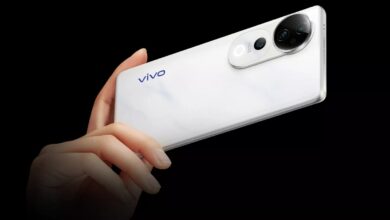How Consumer Behavior Is Driving the B2B Payments Industry


Consumers order groceries online and receive an instant confirmation. Buyers see an ad for a shirt and order it with a few clicks. A money transfer app can be sent to a friend from a mobile device in seconds.
As instant access permeates every aspect of consumer life, people now expect the same blazing speed and frictionless experience in business-to-business payment technologies. But the reality is that most B2B payments are slow, cumbersome, and unintuitive, underscoring the need for change. Surprisingly, while consumers are operating in an instant reality, businesses are often burdened with mailing paper checks, waiting for slow ACH payments, and making costly international payments.
Businesses are increasingly seeing that consumer-to-business technology works quickly and seamlessly, both at home and in stores, and they expect B2B technology to provide the same simple experience.
“Essentially, payments are becoming more direct, frictionless and embedded in customer journeys – and therefore invisible. PayTechs will continue to drive this transformation,” Ernst & Young noted in a report. Now, the market needs the ability to make business payments as effortless as consumer payments.
Latest trends in consumer payments
First, take a look at the latest trends in consumer payments.
After analyzing how consumers’ payment behavior changed during the pandemic, the Federal Reserve Bank of Atlanta said adoption of electronic peer-to-peer payment apps such as PayPal, Venmo and Zelle increased. “Consumers who worked exclusively from home during COVID paid significantly more online or via mobile devices and used cash less often compared to those who worked at least partially in person,” the report said.
In 2023, the Federal Reserve Bank of San Francisco confirmed the ongoing change, publishing a report stating that the percentage of cash used in payments had fallen from 31% in 2016 to 18% in 2022. Over the same period, the use of mobile payment apps increased from 10% to 13% of payments.
According to McKinsey’s 2023 Digital Payments Consumer Survey, despite the return of physical payments, digital payments’ gains have been sustained and in some cases accelerated in the three and a half years since the pandemic began.
But for business payments, organizations often use one or more methods such as ACH payments (in the United States), wire transfers, credit card processing, and paper checks. These can take anywhere from a few days to several weeks to process because the amounts are much larger than most C2B payments, many of them are made across international borders, and often require approvals and security checks to be passed.
That’s not all. B2B payments users face many additional challenges. First, it’s time-consuming to reconcile invoices and payments from many different sources over different time frames. The mismatch between when small and medium-sized businesses receive payments and when they need to pay can cause cash flow issues, making it difficult for businesses to pay their suppliers, especially when a business prefers a bank transfer but the payer wants to use a credit card.
The challenge of international payments
Things are even more challenging when it comes to international payments. A large international transfer generally costs much more than processing a credit card at your local supermarket, which makes international business payments a margin-eating, slow and cumbersome process.
The G20 has indeed implemented a roadmap to increase the speed of international payments. The three main priorities are improving the interoperability and expansion of payment systems, legal and regulatory oversight frameworks, and standards for data exchange and messaging. The G20 wants 75% of cross-border payments to be credited to the beneficiary within one hour. Of course, such plans take a long time to be implemented.
Bridging the gap between business and consumer payments is a necessity. After all, small businesses behave like consumers and have similar expectations. That’s why the ongoing “consumerization of B2B payments” is a trend that has been particularly visible since the pandemic. B2B payments are becoming as seamless and fast as C2B payments.
The real value isn’t just in making payments faster. The real payments revolution is allowing a business to make a payment using any method they want – and for the receiving business to receive the payment using any method they want. The former could use their corporate credit card, and the latter could receive the payment directly into their bank account. Or something else. For example, businesses could pay suppliers in monthly installments while the supplier receives the payment immediately, solving cash flow problems.
Flexibility
It’s the same flexibility that consumers have always had. When people pay in a store, the cashier will usually say, “Cash or card?” Imagine if the business world were that simple. These are the things that people see every day in their lives as consumers, and the B2B payments industry is catching up.
In addition to flexibility, small businesses need simplified, intuitive payment gateways and workflows. Small business owners often spend more time on administrative tasks than on growing their business, so automating these tasks should be a priority to increase productivity and efficiency. Just like consumers, the usability bar for business owners is much higher than it used to be when it comes to the tools they use.
Now is the time for businesses to assess the innovation that PayTechs are enabling. As Ernst & Young wrote in the aforementioned report: “There is a significant opportunity to transform payment offerings to deliver better customer experiences, simplify back-end infrastructure to keep pace with the pace of change, and leverage PayTech innovations to benefit both businesses and consumers.”
We have listed the best trading services for you.
This article was produced as part of TechRadarPro’s Expert Insights channel, where we showcase the best and brightest minds in the technology sector today. The views expressed here are those of the author and do not necessarily represent those of TechRadarPro or Future plc. If you’re interested in contributing, you can read more here:




